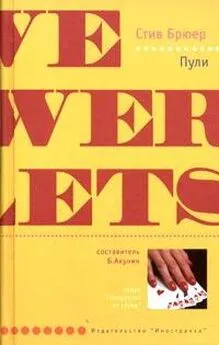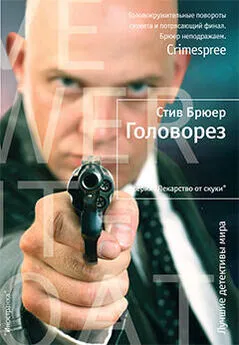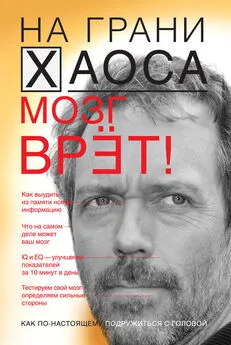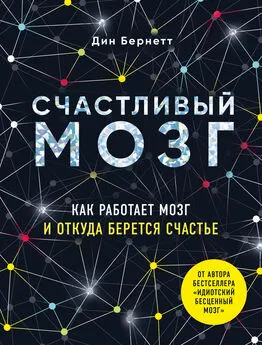Жадсон Брюер - Зависимый мозг
- Название:Зависимый мозг
- Автор:
- Жанр:
- Издательство:Манн, Иванов и Фербер
- Год:2018
- Город:Москва
- ISBN:9785001009979
- Рейтинг:
- Избранное:Добавить в избранное
-
Отзывы:
-
Ваша оценка:
Жадсон Брюер - Зависимый мозг краткое содержание
Зависимый мозг - читать онлайн бесплатно ознакомительный отрывок
Интервал:
Закладка:
95
J. Nakamura, M. Csikszentmihalyi, «Flow Theory and Research,» in The Oxford Handbook of Positive Psychology, 2nd ed., под ред. S. J. Lopez and C. R. Snyder, 195–206 (New York: Oxford University Press, 2009).
96
D. Potter, «Dean Potter: The Modern Day Adventure Samurai,» интервью Jimmy Chin, Jimmy Chin’s Blog, May 12, 2014. Акроним BASE (который лежит в основе термина «бейсджампинг» — Прим. перев .) расшифровывается как building (здание), antenna (антенна), span (перекрытие, пролет моста), earth (земля).
97
Телемарк — стиль катания на специальных лыжах, базирующийся на естественном для человека шаге. Прим. ред.
98
Биологически активные химические вещества, посредством которых осуществляется передача электрохимического импульса от нервной клетки через синаптическое пространство между нейронами. Прим. перев.
99
P. Jackson, H. Delehanty, Eleven Rings: The Soul of Success (New York: Penguin, 2013), 23.
100
Sujiva, «Five Jhana Factors of Concentration/Absorption,» 2012, BuddhaNet, www.buddhanet.net/mettab3.htm.
101
M. Csikszentmihalyi, Finding Flow: The Psychology of Engagement with Everyday Life (New York: Basic Books, 1997), 129.
102
C. J. Limb, A. R. Braun, «Neural Substrates of Spontaneous Musical Performance: An fMRI Study of Jazz Improvisation,» PLoS One 3, no. 2 (2008): 61679; S. Liu и др., «Neural Correlates of Lyrical Improvisation: An fMRI Study of Freestyle Rap,» ScientificReports 2 (2012): 834; G. F. Donnay и др., «Neural Substrates of Interactive Musical Improvisation: An fMRI Study of “Trading Fours” in Jazz,» PLoS One 9, no. 2 (2014): e88665.
103
T. S. Eliot, «Burnt Norton,» in Four Quartets. In the UK and the rest of the world: published by Faber and Faber Ltd., reprinted with permission.
104
Здесь и в следующей главе перевод фрагментов поэмы Т. С. Элиота «Четыре квартета» взят из книги: Элиот Т. С. Полые люди. СПб.: Кристалл, 2000 (перевод С. Степанова). Прим. перев.
105
M. Steinfeld, J. Brewer, «The Psychological Benefits from Reconceptualizing Music-Making as Mindfulness Practice,» Medical Problems of Performing Artists 30, no. 2 (2015): 84–89.
106
S. Kotler, The Rise of Superman: Decoding the Science of Ultimate Human Performance (Boston: New Harvest, 2014), 57.
107
Lao Tzu, Tao Te Ching, перев. Stephen Mitchell (New York: Harper Perennial, 1992), chap. 59.
108
S. Del Canale и др., «The Relationship between Physician Empathy and Disease Complications: An Empirical Study of Primary Care Physicians and Their Diabetic Patients in Parma, Italy,» Academic Medicine 87, no. 9 (2012): 1243–1249; D. P. Rakel и др., «Practitioner Empathy and the Duration of the Common Cold,» Family Medicine 41, no. 7 (2009): 494–501.
109
M. S. Krasner и др., «Association of an Educational Program in Mindful Communication with Burnout, Empathy, and Attitudes among Primary Care Physicians,» JAMA 302, no. 12 (2009): 1284–1293.
110
T. Gyatso (Dalai Lama XIV), The Compassionate Life (Somerville, Mass.: Wisdom Publications, 2003), 21.
111
Krasner и др., «Educational Program in Mindful Communication.»
112
Цитата опубликована в Bankers Magazine in 1964 и приписывается Will Rogerd.
113
B. Thanissaro, перев., Dhammacakkappavattana Sutta: Setting the Wheel of Dhamma in Motion (1993); доступно на Access to Insight: Readings in Theravada Buddhism, www.accesstoinsight.org/tipitaka/sn/sn56/sn56.on.than.html.
114
S. Batchelor, Afier Buddhism: Rethinking the Dharma for a Secular Age (New Haven, Conn.: Yale University Press, 2015), 27.
115
S. Batchelor, Afier Buddhism: Rethinking the Dharma for a Secular Age (New Haven, Conn.: Yale University Press, 2015), 125.
116
T. S. Eliot, «Little Gidding,» в Four Quartets. In the UK and the rest of the world: published by Faber and Faber Ltd., reprinted with permission.
117
A. D. Kramer, J. E. Guillory, J. T. Hancock, «Experimental Evidence of Massive-Scale Emotional Contagion through Social Networks,» Proceedings of the National Academy of Sciences in, no. 24 (2014): 8788–8790.
118
M. Moss, «The Extraordinary Science of Addictive Junk Food,» New York Times Magazine, February 20, 2013.
119
S. Martino и др., «Informal Discussions in Substance Abuse Treatment Sessions,» Journal of Substance Abuse Treatment 36, no. 4 (2009): 366–375.
120
K. M. Carroll и др., «Computer-Assisted Delivery of Cognitive-Behavioral Therapy for Addiction: A Randomized Trial of CBT4CBT,» American Journal of Psychiatry 165, no. 7 (2008): 881–888.
121
Принцип «передай добро дальше» ( англ. pay it forward ) взят из американского художественного фильма 2000 года «Заплати вперед» и лежащего в его основе одноименного романа Кэтрин Райан Хайд. Суть данного подхода заключается в оказании бескорыстной помощи трем незнакомым людям, каждый из которых в свою очередь сделает то же самое для трех других посторонних людей. В итоге число добрых дел будет возрастать в геометрической прогрессии. Прим. перев.
122
A. Buddhaghosa, The Path of Purification: Visuddhimagga (Kandy, Sri Lanka: Buddhist Publication Society, 1991).
123
N. T. Van Dam и др., «Development and Validation of the Behavioral Tendencies Questionnaire,» PLoS One 10, no. II (2015): eo140867.
Интервал:
Закладка:









